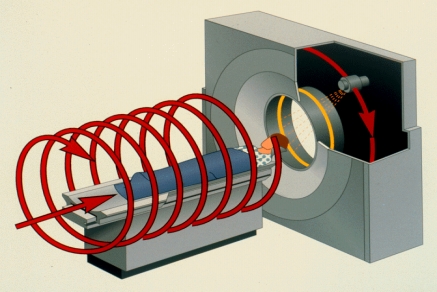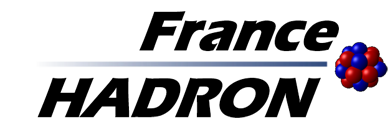WP4 - Optimization of treatments delivered
 The development of an instrumentation specially adapted to the hadrons forms WP4. Among these themes are found different type of imaging, radiation protection and monitoring of the beam.
The development of an instrumentation specially adapted to the hadrons forms WP4. Among these themes are found different type of imaging, radiation protection and monitoring of the beam.
Are involved of the instrumentation development: IPNL (Lyon), IPHC (Strasbourg), the CPPM (Marseille), LPC Caen, CAL (Nice), the CIPAC (Caen), ICPO, GANIL, IRSN and ICR (Toulouse).
WP4.1- Imaging:
a) Imaging of Beta+ emmitters: This WP includes ongoing R&D for an online PET. It was supported by the ENVISION (2010-13) and ENTERVISION (2011-14) projects, as well as BETATRAC Physics Cancer (2012-13).
Deliverables in late 2015: A large field PET imaging device (without TOF) will be delivered for the FrHA nodes. This device allows the detection of beta + emitters in real time and thus present a special interest for the analysis of the temporal structure of medical beams.
b) Prompt gamma imaging: Clinical centers will be equipped with a TOF-collimated gamma camera qualified for the quality control of delivered treatments. R&D on TOF-gamma imaging relies on the quick camera Compton. The camera is being developed with the ENVISION project ENTERVISION and ANR Gamhadron.
c) Secondary proton vertex imaging: This project corresponds to ongoing R&D on secondary proton imaging, supported by ENVISION and the QAPIVI (2012-13) Physics Cancer projects.
WP4.2- Proton radiography:
This is an ambitious project for which France HADRON partially contributes as part of the national effort coordinated by CNRS / IN2P3 and INSERM. A project was coordinated by the CREATIS to conduct feasibility simulations. However, obtaining a reliable prototype will be long due to the absence of a high-energy proton beam, which can pass through a patient (250 to 300 MeV). This X-ray project applicable only to carbon therapy is related to the imaging of protons across the vertex reconstruction. The idea is to reconstruct the trajectories of ejected protons patient during treatment.
WP4.3- Beam environment:
a) Beam diagnostics and monitoring: Taking advantage of already developed devices, the DOSION dosimeter, developed specifically for heavy ions, will be suitable for light ions and protons. Conversely, the beam monitor IC2/3 will be adapted to carbon ions.
b) Contamination par les neutrons: This activity will be carried out at the CAL (Nice), the ICPO (Orsay) and GANIL (Caen) by the teams of the IRSN. It involves systematic measurements of neutron emissions in treatment conditions to obtain more data and improved dosimetry for the patient radioprotection.
WP4.4- microdosimetry and damages on electronics:
Concerning damage to electronic components, a worldwide community has been working on this topic for years, mainly for space and aeronautics applications. However, the problem also applies to "in room" electronic devices (imaging devices, robots, dose counting systems, sensors...) in hadrontherapy and affects both lifespan and quality (especially for dose monitors and imaging systems). This activity is not a priority but it could help to improve the resistance and quality of these devices over the long-term. It will essentially be developed in Toulouse when PERICLES will be built.
Events
June-5th 2015: WP4 meeting in Lyon
May-11th 2015 : Steering-commitee meeting in Paris
April-15th 2015: WP1 meeting in Orsay
Module-Workshops and international meeting
May 18-23 2015: 54th PTCOG - Manchester Grand Hyatt, San Diego, California







